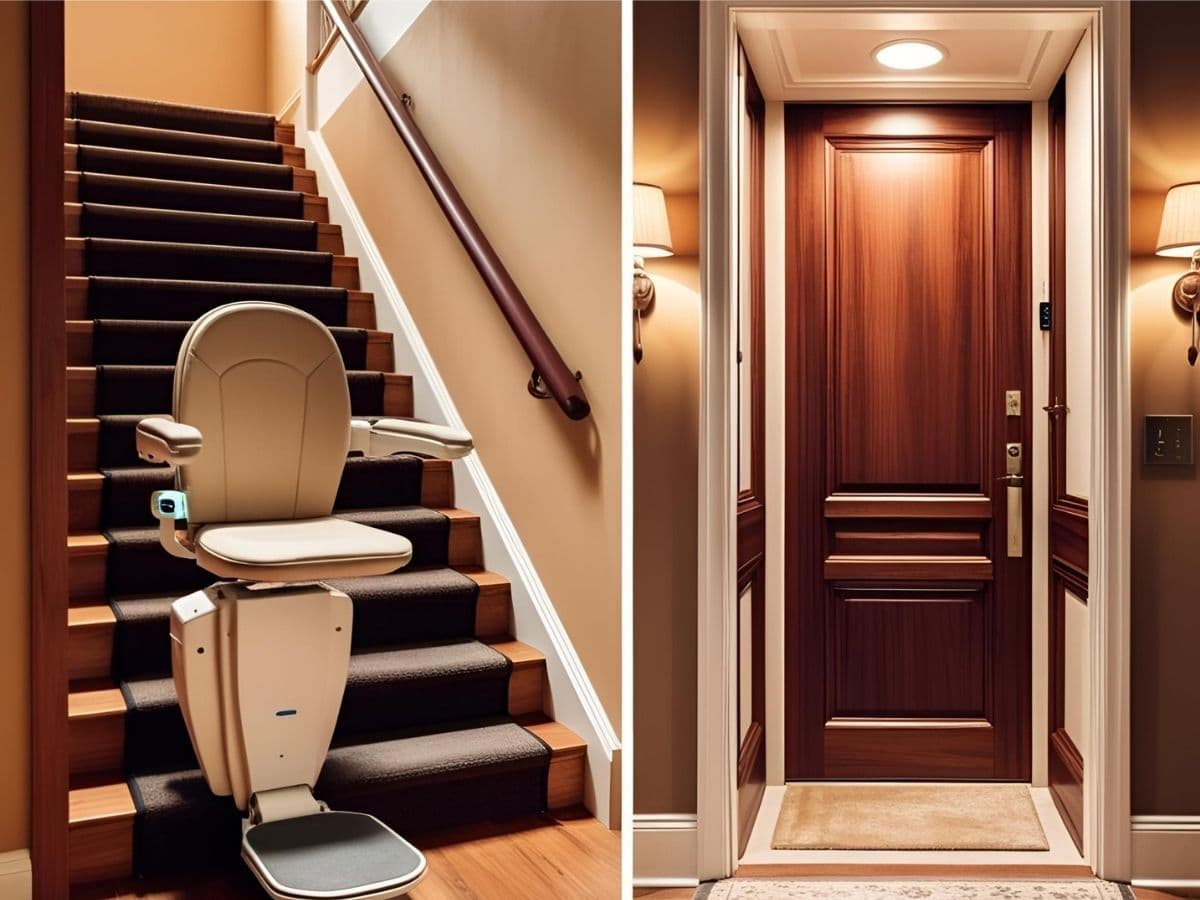
In the evolving landscape of modern home design, innovation is no longer limited to aesthetics or smart appliances. Vertical mobility solutions—particularly stairlifts and home lifts—are transforming the way homeowners navigate multi-level residences. For families in India’s urban centers like Chennai, Bengaluru, and Mumbai, where compact architecture meets luxury expectations, the debate between stairlifts and home lifts is becoming increasingly relevant.
This blog delves into a comprehensive comparison of stairlifts vs home lifts, helping homeowners understand their differences, benefits, limitations, and suitability for long-term innovation in floor-to-floor mobility.
A stairlift is a motorized chair that travels along a rail mounted to the staircase. Designed for individuals with limited mobility, it allows users to move up and down stairs without walking. Stairlifts are typically installed on existing staircases, making them ideal for retrofitting.
A home lift (also known as a residential elevator) is a small-scale vertical transport system that moves individuals between floors inside a vertical shaft. Unlike stairlifts, home lifts do not rely on the staircase and can be centrally installed as part of the home's architectural layout.
Winner: Home Lift
For aesthetic cohesion and luxury integration, home lifts offer far greater design flexibility.
Winner: Stairlift
If space is severely restricted, especially in older buildings or compact homes, stairlifts are easier to accommodate.
Winner: Stairlift
In terms of quick and non-disruptive installation, stairlifts have the edge.
Winner: Home Lift
For overall user comfort and inclusivity, home lifts provide a better experience.
Winner: Home Lift
The enclosed cabin and advanced safety systems make home lifts the safer option for varied users.
Winner: Stairlift (Short Term), Home Lift (Long Term)
Stairlifts are cost-effective for immediate needs; home lifts are better for future-ready investments.
Winner: Depends on Usage
Stairlifts are easier to maintain for occasional use. Home lifts require more commitment but offer long-term durability.
Stairlifts are excellent for senior citizens recovering from surgery or living independently in multi-level homes. They’re simple, affordable, and quickly installable—ideal when structural changes are not possible.
Home lifts are better suited for multigenerational homes, families with children, and users with permanent mobility concerns. They also enhance the property’s luxury profile and improve resale value.
Home lifts can be easily integrated during a renovation or while constructing a new house. Planning the shaft early in the design phase allows greater flexibility in size, type, and design of the lift.
Many modern home lifts are compatible with smart home ecosystems—users can call the lift using a smartphone app or voice assistant. Some stairlifts are also adopting wireless remotes and intelligent scheduling.
Both stairlifts and home lifts now feature energy-saving technologies such as standby modes, low-consumption motors, and regenerative drives (in lifts). Home lifts are increasingly being designed to work efficiently with residential solar panels.
Customized stairlifts for curved staircases, folding seats, and modular tracks are now available. Similarly, home lifts offer multiple cabin sizes, custom finishes, and advanced control systems for ultimate flexibility.
Stairlifts: Unsuitable for wheelchair users unless paired with additional lifts. Also, may not appeal aesthetically in luxury homes
.Home Lifts: High cost and need for space or structural modification can be a barrier. Installation in some heritage buildings may be restricted.
The decision between a stairlift and a home lift ultimately depends on a few critical factors:
In the context of home floor innovation, both stairlifts and home lifts have distinct roles to play. Stairlifts offer a practical, cost-effective solution for existing homes with minimal disruption. Home lifts, on the other hand, embody the future of residential design—where mobility, luxury, and convenience coexist.
As Indian cities like Chennai continue to embrace smarter housing trends, understanding the strengths and limitations of each system empowers homeowners to make informed decisions that align with both their lifestyle and architectural vision.